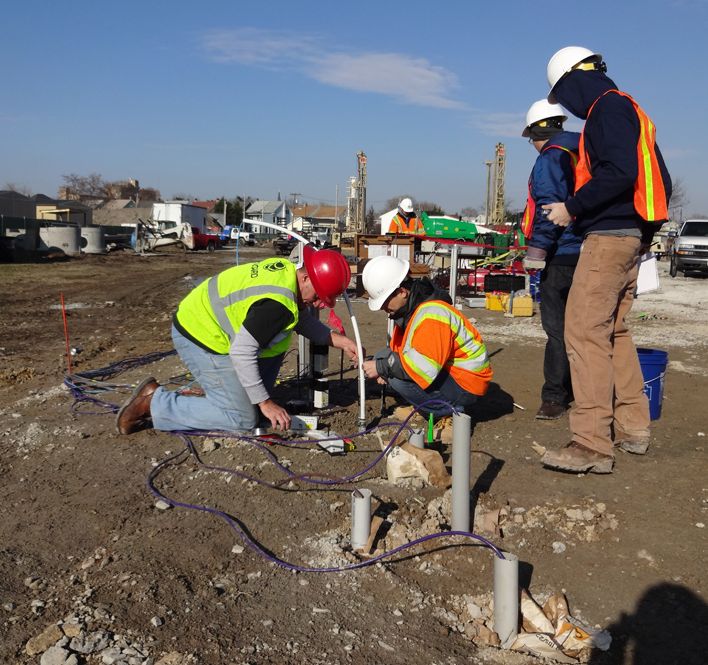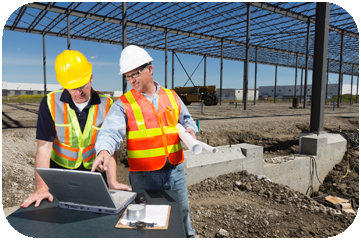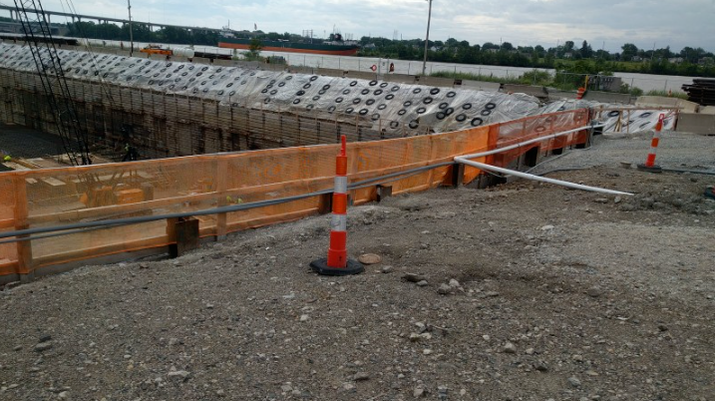Consulting Civil Engineering Companies Supplying Geotechnical Solutions
Consulting Civil Engineering Companies Supplying Geotechnical Solutions
Blog Article
Exactly How Consulting Engineers Enhance Geotechnical Engineering Projects: Insights Into Their Knowledge, Approaches, and Collaborative Approaches
Consulting designers are essential in enhancing geotechnical engineering jobs, using their specialized expertise to browse the intricacies of subsurface problems. Their techniques incorporate an array of website investigation strategies, consisting of Standard Penetration Tests (SPT) and Cone Infiltration Tests (CPT), which educate critical choices during the design and building and construction stages. Their collective approaches foster communication amongst diverse job stakeholders, ultimately forming the task's trajectory. As we take a look at the multifaceted functions these professionals play, it ends up being clear that their payments prolong past technical proficiency, motivating a closer consider the implications for task success.
Duty of Consulting Engineers
The expertise of seeking advice from designers in geotechnical engineering is essential to the effective implementation of construction jobs. These experts play a crucial role in evaluating dirt and rock residential properties, which are critical factors influencing style and building and construction choices. By performing comprehensive site investigations, seeking advice from designers accumulate essential data that notifies the style process, making sure jobs are improved secure and suitable ground.
Consulting engineers also supply invaluable insights into risk management (geotechnical geologist). They determine prospective geotechnical dangers, such as landslides, dirt liquefaction, and negotiation concerns, making it possible for stakeholders to apply reliable reduction techniques. Their knowledge aids in optimizing structure layouts, which can result in considerable price financial savings and improved safety
Additionally, seeking advice from engineers work as a vital web link in between project proprietors, engineers, and service providers. Their capability to translate intricate geotechnical information into workable suggestions promotes collaboration and promotes notified decision-making throughout the job lifecycle. This multidisciplinary approach not just boosts job efficiency however also ensures conformity with regulative standards and ideal methods.
Trick Methods in Geotechnical Engineering

One key approach is website examination, which involves conducting field examinations and research laboratory evaluations to gather data on subsurface conditions. Strategies such as Criterion Infiltration Screening (SPT) and Cone Penetration Testing (CPT) are widely utilized to review dirt stratigraphy and strength. Additionally, geophysical methods, including seismic and electrical resistivity surveys, supply non-invasive ways to analyze subsurface characteristics.
Another crucial method is mathematical modeling, which allows designers to replicate different situations and anticipate exactly how soil-structure communications will certainly behave under different loading problems. Finite Component Analysis (FEA) is a common approach used in this context.
Furthermore, the layout of foundations, keeping structures, and earthworks relies greatly on these methodologies - geotechnical geologist. By incorporating sophisticated analytical tools with field information, consulting designers can create tailored services that address specific task difficulties, eventually contributing to the security and safety and security of building and construction tasks
Value of Soil Evaluation
Dirt analysis acts as a fundamental element in geotechnical design, supplying vital insights right into the physical and chemical residential properties of soil essential for effective building and construction planning. Recognizing soil characteristics is vital for identifying its load-bearing capacity, drain behavior, and capacity for settlement or instability. In-depth dirt examinations, consisting of sampling and research laboratory testing, assistance recognize parameters such as dirt kind, moisture material, thickness, and shear strength.
These analyses educate the selection of proper building and construction techniques and products, inevitably influencing job safety and security and long life. For example, cohesive dirts might require different foundation layouts contrasted to granular soils, requiring customized design remedies. Related Site Furthermore, soil analysis aids in determining pollutants that might posture threats to human wellness or the environment, enabling the advancement of mitigation approaches.
Integrating dirt evaluation into the onset of project development helps to minimize unexpected challenges, ensuring that engineers can prepare for and resolve possible problems before they escalate. By developing a comprehensive understanding of the site problems, getting in touch with designers can enhance style efficiency and lower prices, consequently improving the overall success of geotechnical design projects.
Joint Strategies in Jobs
Successful geotechnical tasks usually depend upon collective approaches that unite varied experience from different disciplines. Reliable partnership amongst seeking advice from engineers, rock hounds, environmental researchers, and building professionals is critical for attending to complex obstacles and optimizing task results. By leveraging the unique abilities and knowledge of each group member, jobs can take advantage of an alternative understanding of the website conditions, governing demands, and design constraints.
Routine communication and interdisciplinary meetings promote the sharing of insights and cultivate a culture of team effort. These joint efforts make it possible for the identification of prospective threats early in the project lifecycle, enabling timely reduction strategies. Additionally, incorporating comments from stakeholders, consisting of local neighborhoods and governing agencies, makes sure that all viewpoints are thought about, improving task acceptance and compliance.
Additionally, the combination of innovative modern technologies, such as Geographic Information Systems (GIS) and Building Info Modeling (BIM), additional improves cooperation. These devices enable the real-time sharing of information and visualization of geotechnical problems, advertising educated decision-making. Ultimately, a collaborative approach not only improves job execution however likewise lays the foundation for ingenious options to intricate geotechnical design obstacles.
Influence On Task End Results

Consulting engineers use sophisticated methodologies such as danger assessment and anticipating modeling, which enhance the precision of task forecasts. Their capacity to integrate cutting-edge innovations, like geotechnical instrumentation and information analytics, even more improves the design and building and construction processes. Consequently, tasks experience enhanced performance, decreased expenses, and minimized delays.
In addition, fostering efficient interaction and collaboration amongst staff member improves analytic capabilities. When difficulties arise, an unified front enables speedy identification of options, preventing prospective Look At This troubles. Ultimately, the collective initiatives of consulting engineers add to better end results, ensuring that tasks meet both regulatory standards and client assumptions.
Final Thought

Report this page